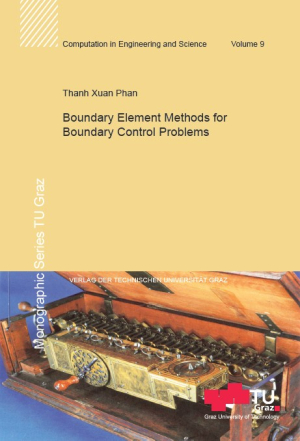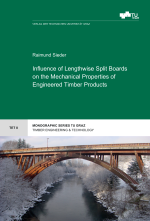In this book we consider the application of boundary integral equation methods to the solution of boundary control problems governed by boundary value problems of linear second order elliptic and parabolic partial differential equations. The use of the related energy spaces for the Dirichlet control allows to consider a standard variational formulation. Moreover, it shows the proper mapping properties which link the Dirichlet and Neumann data in the optimality condition by using some appropriate operators. In the case of box constraints the optimality condition is a variational inequality in $H^{1/2}(Gamma)$ which can be written as a Signorini boundary value problem with bilateral constraints.
Since the unknown function in boundary control problems is to be found on the boundary of the computational domain, the use of boundary element methods seems to be a natural choice. In particular, the solutions of both the state and adjoint boundary value problems are represented by surface and volume potentials. Since the state enters the adjoint problem as volume density, we apply integration by parts to replace these volume potentials by surface potentials. This results in a system of boundary integral equations. In the case of parabolic boundary control problems we use an auxiliary function which relates to the fundamental solution of the heat equation, to get rid of volume potentials. We derive the unique solvability and study the boundary element discretizations of the optimality system. Then, we prove stability and related error estimates. Some numerical examples are tested to confirm the theoretical results.
Ausgabe: kartoniert
ISBN: 978-3-85125-149-4
Umfang: 131 Seiten
Sprache: Englisch
Erschienen: Juli 2011
Reihe: Monographic Series TU Graz / Computation in Engineering and Science, Band Vol. 9
Vergriffen!
In this book we consider the application of boundary integral equation methods to the solution of boundary control problems governed by boundary value problems of linear second order elliptic and parabolic partial differential equations. The use of the related energy spaces for the Dirichlet control allows to consider a standard variational formulation. Moreover, it shows the proper mapping properties which link the Dirichlet and Neumann data in the optimality condition by using some appropriate operators. In the case of box constraints the optimality condition is a variational inequality in $H^{1/2}(Gamma)$ which can be written as a Signorini boundary value problem with bilateral constraints.
Since the unknown function in boundary control problems is to be found on the boundary of the computational domain, the use of boundary element methods seems to be a natural choice. In particular, the solutions of both the state and adjoint boundary value problems are represented by surface and volume potentials. Since the state enters the adjoint problem as volume density, we apply integration by parts to replace these volume potentials by surface potentials. This results in a system of boundary integral equations. In the case of parabolic boundary control problems we use an auxiliary function which relates to the fundamental solution of the heat equation, to get rid of volume potentials. We derive the unique solvability and study the boundary element discretizations of the optimality system. Then, we prove stability and related error estimates. Some numerical examples are tested to confirm the theoretical results.





